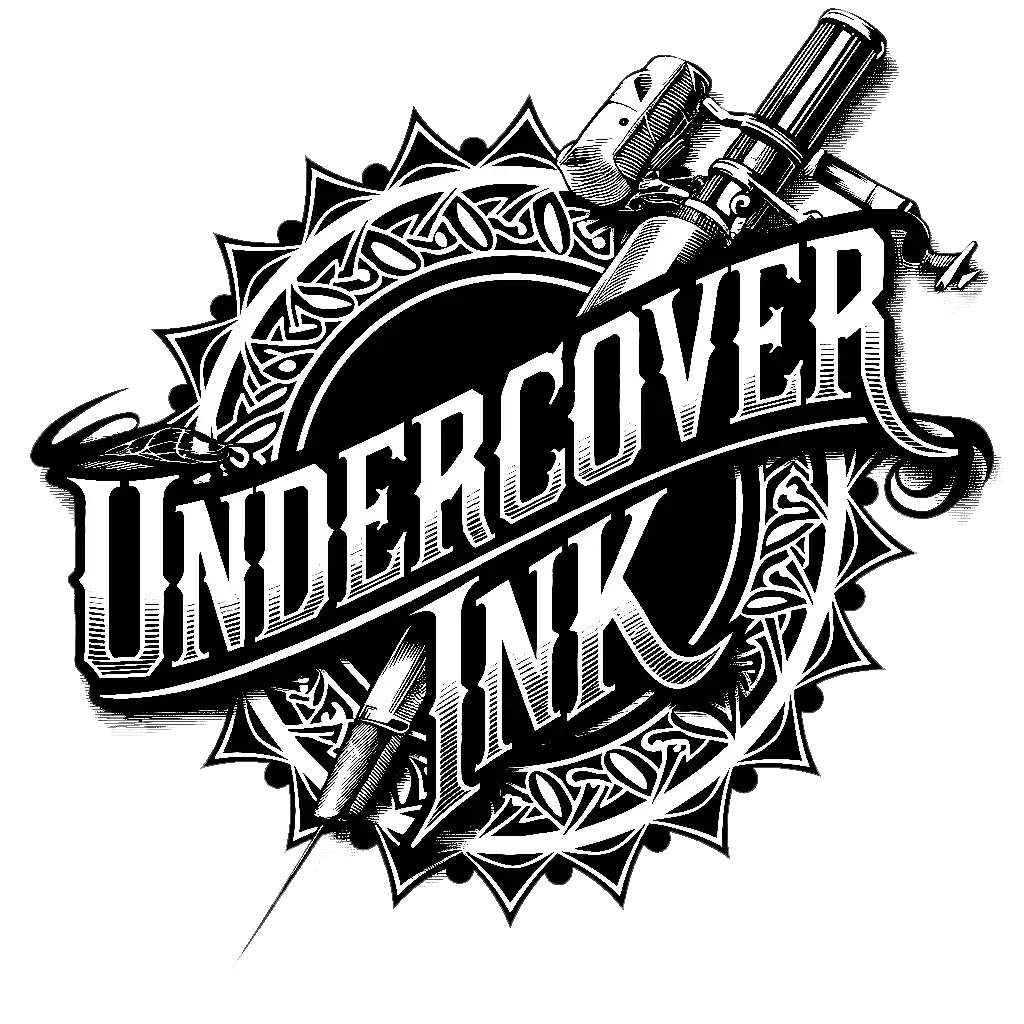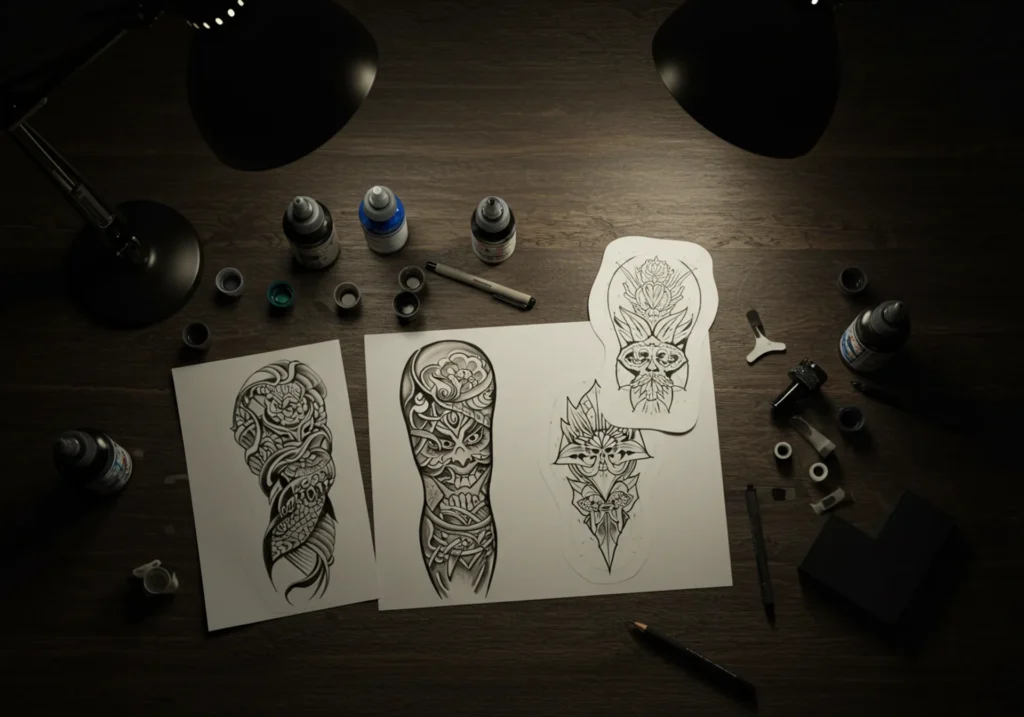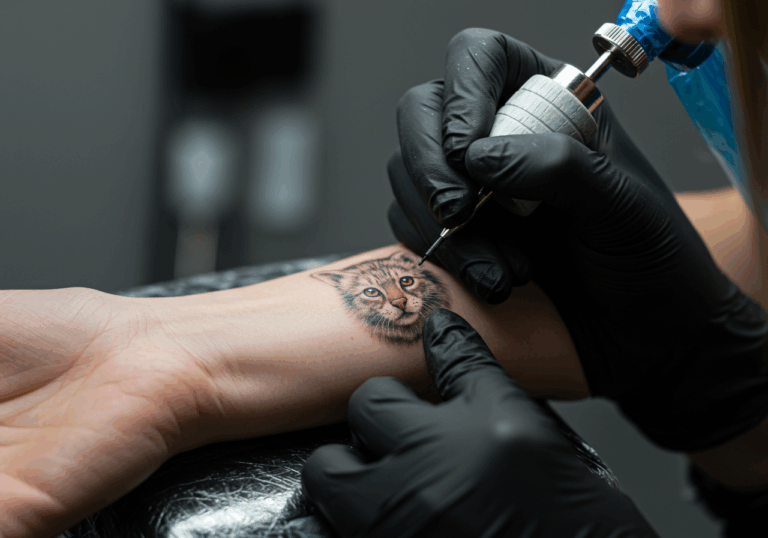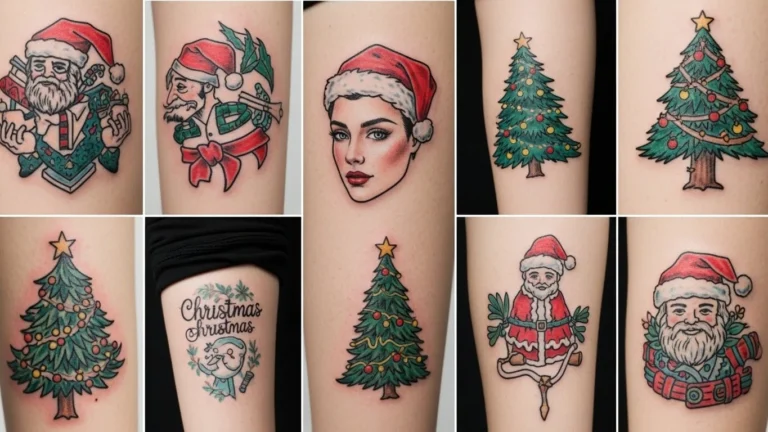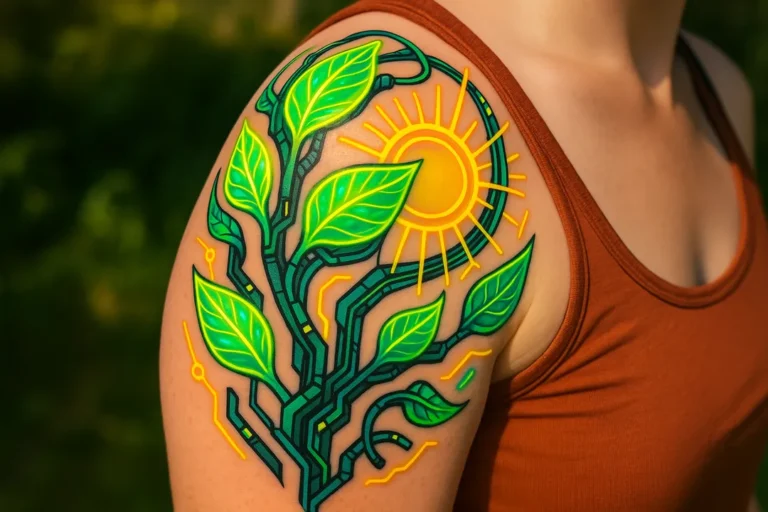“Cover-Up Tattoos: Transforming Old Ink into New Art” is a solution for anyone looking to refresh or reinvent existing body art. Cover-up tattoos serve one clear purpose — to conceal, blend, or completely transform an unwanted or faded tattoo with a new design that better matches your current taste and identity.
Unwanted ink can be the result of faded colors, a change in personal style, or simply outgrowing the meaning behind an old tattoo. Instead of resorting to laser removal, which can be expensive and time-consuming, cover-up tattoos use creativity and skilled technique to breathe new life into your skin.
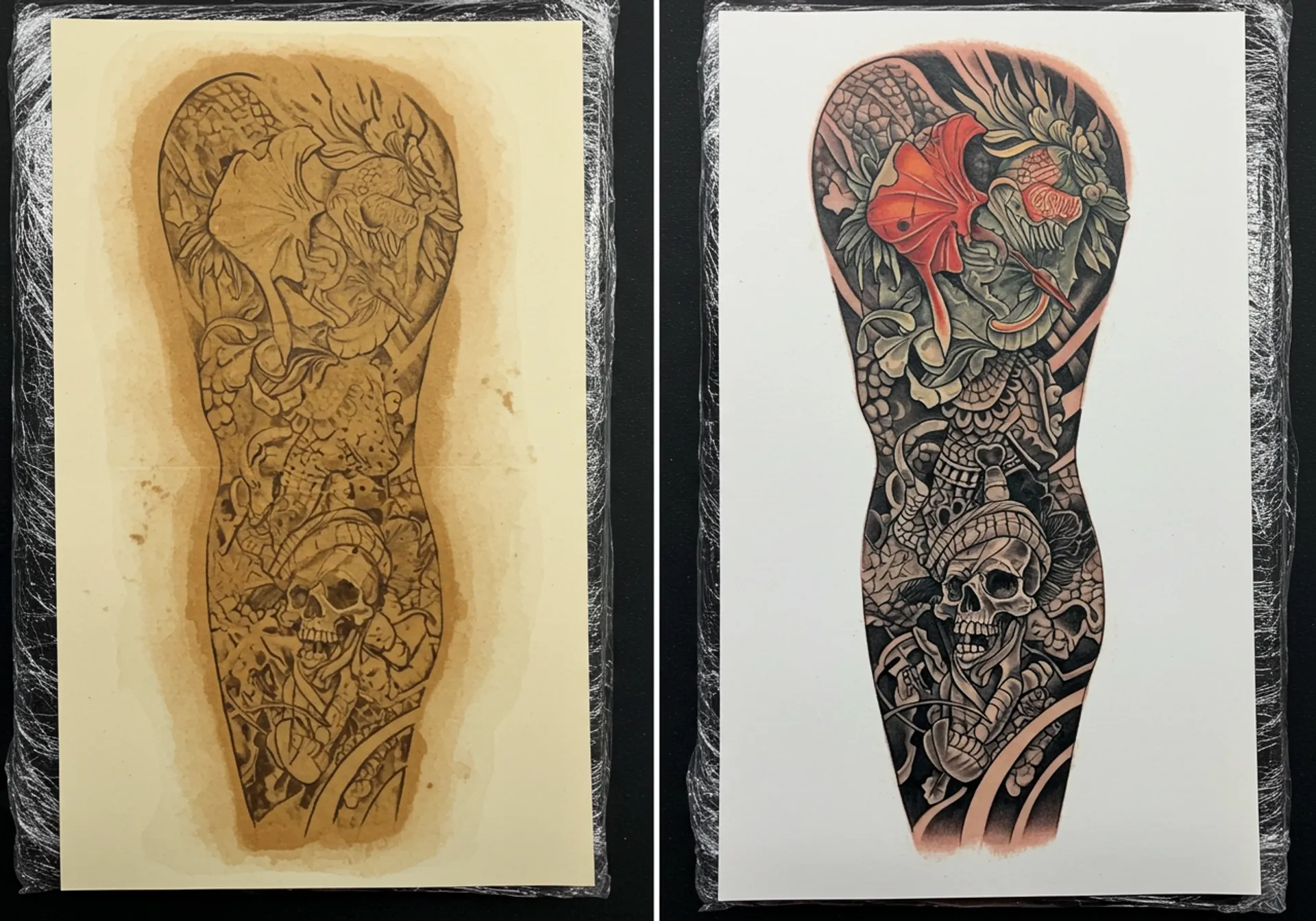
Key benefits of cover-up tattoos:
- Conceal past mistakes or outdated designs with fresh artwork
- Embrace evolving personal stories without erasing history
- Restore confidence by turning old ink into something meaningful and visually stunning
Cover-up tattoos offer more than just camouflage — they open up opportunities for creative expression, allowing you to take control of your body art journey.
With experienced artists applying advanced techniques and thoughtful design choices, it becomes possible to transform even the most stubborn old ink into vibrant new art. This approach empowers individuals to confidently showcase their tattoos as part of their ongoing self-expression.
The Artistry Behind Cover-Up Tattoos
Creating a successful cover-up tattoo requires a combination of technical skill, creativity, and experience. Not every tattoo artist can execute a flawless transformation—this is a specialized area where the expertise of skilled tattoo artists truly stands out.
1. Expertise and Technical Precision
Cover-up tattoos require an in-depth understanding of skin tones, ink behavior, and how different pigments interact with existing tattoos. Artists must analyze the old ink’s placement, shape, and saturation to design a new piece that will effectively mask the original work.
2. Seamless Blending Techniques
The best cover-up work seamlessly merges old and new elements. Skilled artists use layering, shading, and clever design techniques to blur the lines between what was there before and what’s being added. This process often involves working around shapes or lines from the previous tattoo rather than simply blanketing them — a challenge that only comes with experience and artistic vision.
3. Strategic Use of Darker Inks
Darker inks play a crucial role in cover-up artistry. Blacks, deep blues, purples, and rich greens offer stronger opacity for camouflaging unwanted ink. These shades not only conceal but also enhance the new design’s depth and dimension. A well-executed cover-up uses darkness not as a limitation but as a foundation for creating striking art.
The artistry behind cover-up tattoos goes far beyond simply hiding an old design — it’s about reimagining possibilities through expert hands and creative minds.
Factors Influencing Successful Cover-Ups
Certain characteristics of the old tattoo play a crucial role in determining the feasibility and success of a cover-up tattoo. Key factors include:
1. Size
Larger tattoos often provide more flexibility for cover-ups, allowing for greater creativity and design options. Conversely, smaller tattoos might limit the possibilities, necessitating a strategic approach to effectively conceal the old ink.
2. Color
The existing color palette impacts the selection of new inks. Darker colors like blacks and deep blues are typically easier to cover, whereas lighter colors, such as yellows and pastels, pose more of a challenge and may require multiple layers or preliminary lightening sessions.
Another important consideration is the condition of the skin where the old tattoo resides. This encompasses:
Scar Tissue
Any scar tissue present from previous tattoos or other injuries can affect how well new ink adheres to the skin and how it heals. Skilled artists will assess and work around these areas to ensure an even application.
Age of Tattoo
Older tattoos that have faded over time are generally easier to cover compared to fresh ink. The natural fading process lightens the original design, providing a better canvas for new artwork.
- Location
Placement also influences cover-up potential. Tattoos located on flat, smooth areas of the body tend to be easier to rework than those on curved or highly mobile regions.
By carefully evaluating these factors, artists can create customized cover-ups that seamlessly blend with and enhance your existing body art.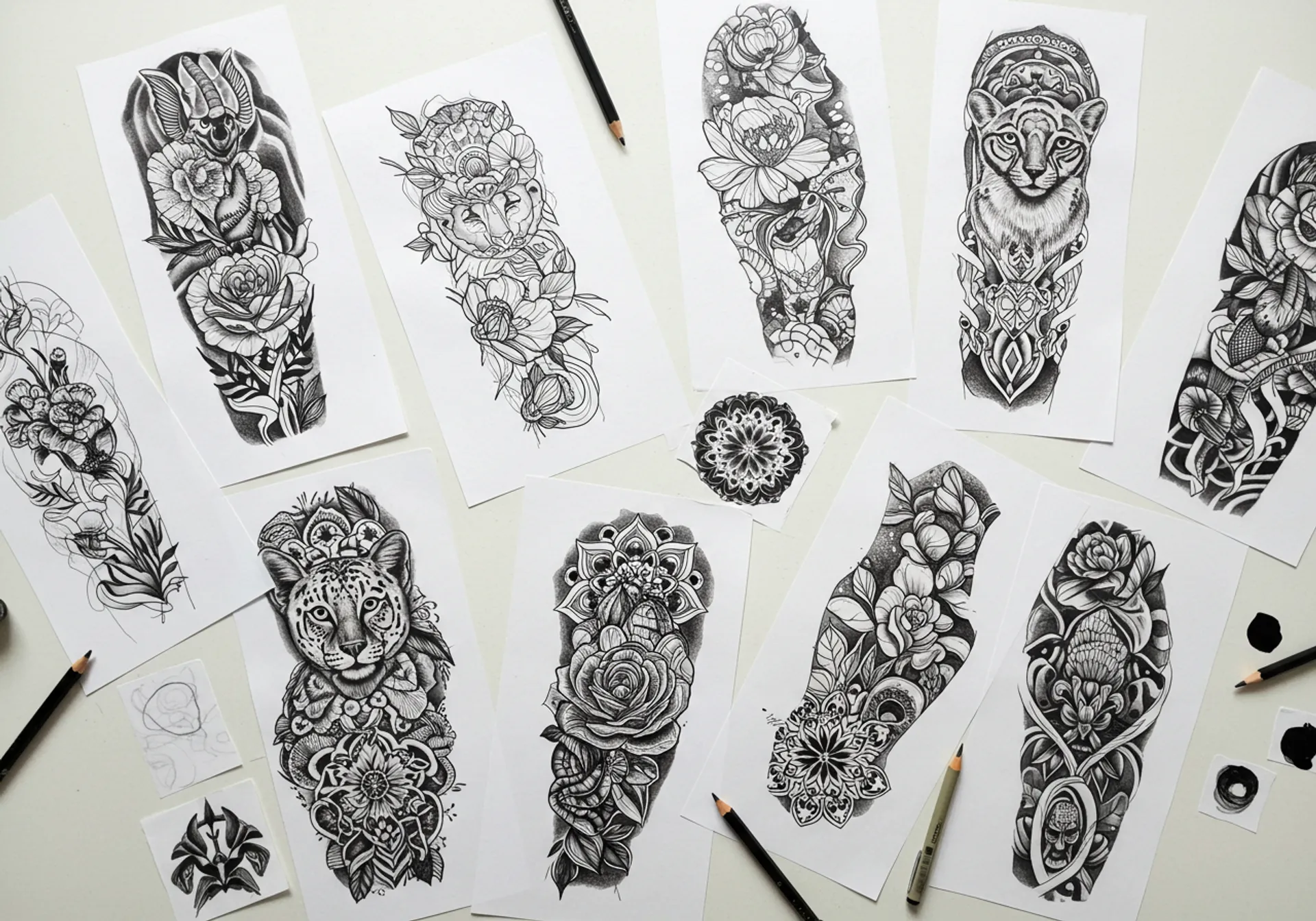
Advantages of Choosing Cover-Up Tattoos Over Laser Removal
Cover-up tattoos offer a distinct alternative to laser removal for those looking to update or conceal old ink. This approach provides immediate results, allowing you to walk out of the studio with a new piece of art rather than waiting through multiple laser sessions and healing periods.
Key benefits of choosing cover-up tattoos include:
- Instant Transformation: Unlike laser removal, which often takes months and several treatments to fade ink, a cover-up delivers a visible change in just one or two sessions.
- Personalization and Artistic Freedom: Cover-up tattoos allow you to collaborate with your artist, creating a design that reflects your current style, interests, or life experiences. You aren’t just erasing the past — you’re adding a new chapter.
- Cost-Efficiency: Laser removal can become expensive when factoring in repeated sessions. A cover-up is typically more budget-friendly for those seeking an alternative to laser removal.
- Less Physical Discomfort: Tattooing over old ink can be less painful than laser treatments, which involve intense bursts of light and can cause significant discomfort.
- Creative Evolution: Cover-up tattoos embrace the concept of body art as an ongoing journey. Updating body art means your tattoos grow with you, transforming old ink into new art that better represents who you are today.
Choosing this path not only conceals unwanted designs but also reinvents them, offering both aesthetic renewal and personal meaning. The process celebrates growth and creativity, making it a favored option for many seeking transformation.
Design Possibilities: From Floral Patterns to Bold Imagery
Cover-up tattoos open up a wide range of creative design options, each tailored to effectively conceal and transform old ink while expressing your unique style. The right design not only hides the previous tattoo but also enhances the artistry of your skin.
Popular Cover-Up Styles Include:
- Floral Patterns
- Flowers are one of the most versatile choices for cover-ups. Their organic shapes, layered petals, and natural shading make them ideal for disguising underlying lines and faded ink. Roses, peonies, and lilies commonly feature in these designs, with foliage and vines used to extend coverage seamlessly.
- Animals
- Animal motifs provide dynamic forms and strong outlines that easily mask older tattoos. Whether you choose a bold lion, an intricate koi fish, or a stylized bird, animal imagery works well for both realistic and illustrative approaches.
- Geometric Art
- Geometric patterns — such as mandalas, tessellations, or abstract linework — offer precision and repetition. These elements break up the visual impact of the original tattoo while introducing modern aesthetics. Intricate shapes naturally draw attention away from the underlayer.
- Bold Imagery:
- High-contrast themes using dark inks — like skulls, mythological creatures, or dramatic landscapes—deliver strong visual statements. These designs rely on depth, shading, and size to obliterate traces of the old tattoo beneath.
Selecting a style that resonates with your personal taste is essential. Each option allows customization in terms of color palette, complexity, and placement to ensure your new tattoo feels intentional and artfully executed.
The Step-by-Step Journey of a Successful Cover-Up Tattoo
1. Consultation
The journey begins with an in-depth consultation with your chosen tattoo artist. This stage is crucial for assessing the old tattoo’s characteristics, such as size, color, and placement. During this session, you and the artist will discuss your vision for the new design and how it can effectively cover or blend with the existing ink.
2. Lightening Your Old Tattoo
In some cases, lightening the old tattoo through laser sessions may be recommended to improve the cover-up’s effectiveness. This step helps reduce the visibility of the original ink, making it easier for the new design to stand out.
3. New Design Elements
Incorporating new design elements is a vital part of the process. Skilled artists use creative techniques and darker inks to mask the old tattoo. The new design is often larger and more intricate, ensuring comprehensive coverage. Popular choices include floral patterns, bold imagery, and geometric art that effectively obscure older ink.
4. Tattooing Process
Once the design is finalized, the tattooing process begins. This stage involves careful application of the new design over the old tattoo. The artist works meticulously to ensure seamless blending and optimal coverage.
5. Aftercare
Proper aftercare is essential for maintaining the quality and longevity of your new ink. Follow your artist’s advice on cleaning and moisturizing to ensure vibrant and long-lasting results.
This step-by-step guidance through each stage ensures a successful transformation from old ink to stunning new art.
Caring for Your New Ink: Aftercare Tips for Long-Lasting Results
To keep your freshly done cover-up tattoo looking vibrant and lasting, it’s important to take care of it properly. Here are some practical tips:
1. Keep it clean and dry
Gently wash the tattoo with a mild, fragrance-free soap and lukewarm water. Use a clean towel or paper towel to pat it dry.
2. Apply ointment
Use a thin layer of tattoo-specific ointment to keep the area moisturized. Avoid using petroleum jelly or anything too thick, as it can block air from reaching the tattoo.
3. Avoid sun exposure
Direct sunlight can fade tattoos quickly. Protect your new ink by keeping it covered or applying a high SPF sunscreen once it’s healed.
4. Wear loose clothing
Tight clothing can rub against the tattoo and cause irritation. Opt for breathable fabrics that won’t stick to the healing skin.
5. Stay out of water
Avoid swimming pools, hot tubs, and prolonged baths during the healing process to prevent infections and ink loss.
6. Follow your artist’s advice
Every artist might have specific recommendations based on your unique design and skin type.
7. Touch-up sessions
Sometimes, touch-ups are necessary to ensure full coverage and vibrancy of the cover-up tattoo. Schedule these as per your artist’s advice for optimal results.
By following these aftercare practices, you ensure that your cover-up tattoo remains a stunning piece of art for years to come, embodying the transformation from old ink into new beauty.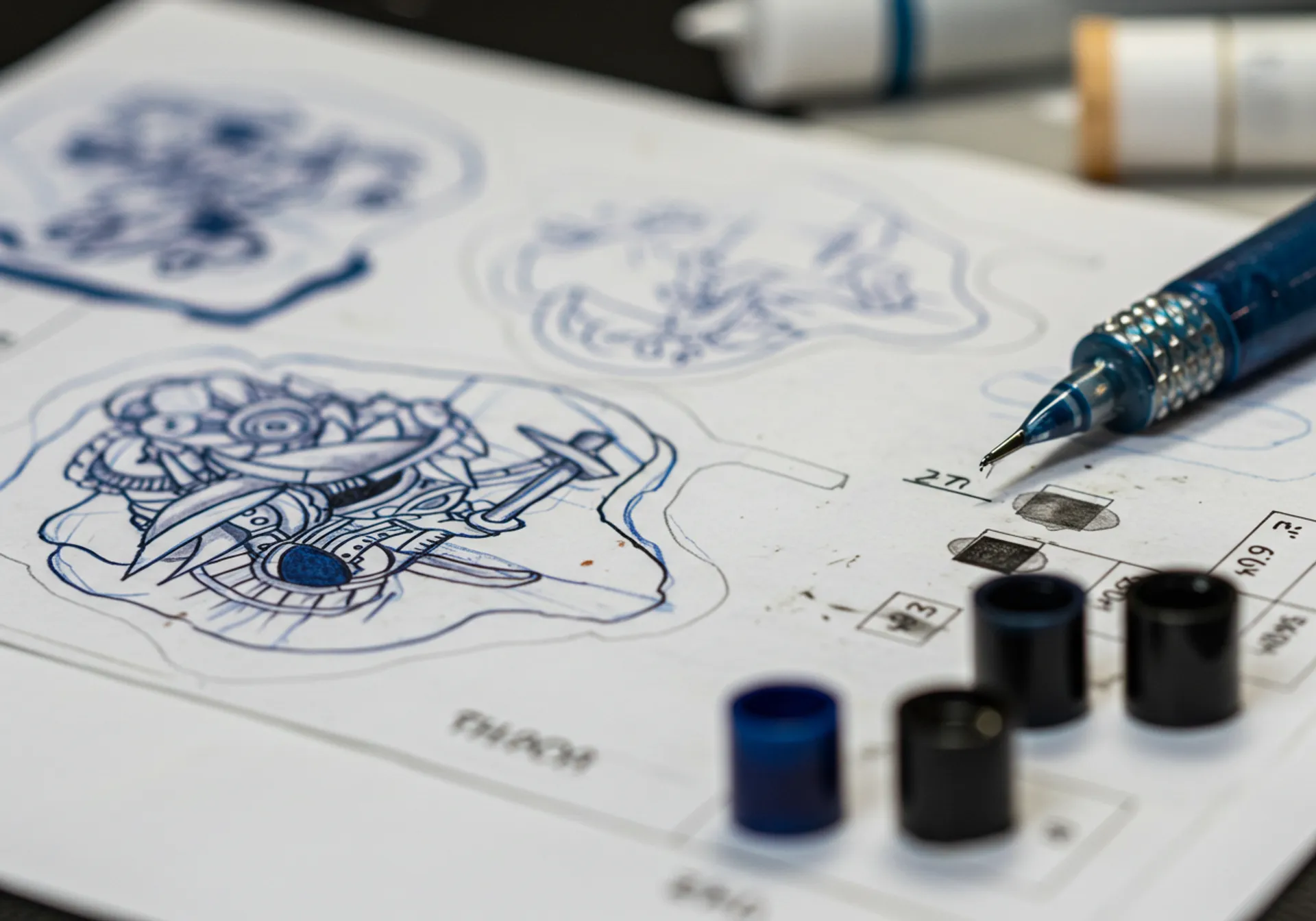
Finding Your Ideal Tattoo Artist: Collaboration for Optimal Results
Choosing the right artist is crucial for successful cover-up tattoos. An experienced artist with a strong portfolio in cover-ups has the technical skill, creativity, and confidence to turn difficult old tattoos into new art. However, not all tattooists specialize in this area, so it’s important to carefully review portfolios and look for healed examples of previous cover-up work. This will give you an idea of their ability to blend colors, hide challenging shapes, and design pieces that completely cover unwanted tattoos.
Key qualities in an artist specializing in cover-ups:
- Demonstrated expertise in working with various skin types and scar tissue
- Creative vision for adapting your ideas to suit the unique demands of a cover-up
- Transparent communication regarding limitations and expected results
Collaboration between the client and artist is essential during the transformation process. It’s important to bring reference images, be open about your expectations, and trust your artist’s honest feedback on what will — and won’t — work. Many successful transformations come from being flexible; sometimes, letting go of an original concept leads to a more beautiful final piece.
The most successful examples of “Cover-Up Tattoos: Transforming Old Ink into New Art” rely not just on technical skill but also on mutual respect and open dialogue throughout every step. When you work with a true professional, your journey toward renewed body art becomes both exciting and rewarding.
